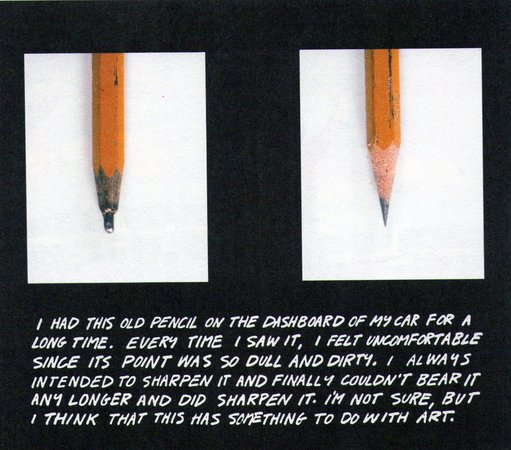
Impressionism is an art style that captures the spirit of a moment. Unlike earlier paintings, the artists of the period used free-brushstrokes and spontaneous colours, and followed the work of Delacroix and Monet. To capture the light fading from the sun, they painted realistic scenes of modern-day life. However, these works are not without their flaws, and there are many other aspects of impressionist art to consider before you purchase an Impressionist painting.
Impressionism painters
The early Impressionist painters didn't adhere to the strict rules of academic painting. They used loose brushstrokes and captured the moment with their paintings. Their paintings captured a fleeting environment and included more color and a distinct tree of color. The new style allowed for more light and shadows, and these artists painted outside scenes. Many aspects of impressionionism are similar to other types, including expressionism and realist.
Cezanne, Renoir and Sisley were among the Impressionists. They were divided about their artistic methods but united by their rebellious spirit. Although their paintings were rejected by others, they received attention at the Salon des Refuses in 1874. This was a group exhibition of works that had been rejected. They remained self-sufficient for a few years, and their works were displayed in eight major shows during that period.

Impressionism style
The French painters who attempted to show the effects of light are what gave rise to the Impressionist style. Their thinking was greatly influenced in this period by science-related discoveries like optics. Impressionist painters were intrigued by how light reflects off surfaces. They wanted to capture these momentary effects on the surface of objects. Their work is a reflection of the same modernity and freedom. Impressionist painters preferred to paint landscapes and still life scenes.
Claude Monet is perhaps the most prominent Impressionist. He is often credited with starting the Impressionism movement. Monet's life was filled with many different subjects. Although his early work featured scenes from everyday life, his passion was for nature. This passion culminated in the Water Lilies Series. Monet bought a small piece of marshland right across from his Giverny residence to create these works. Monet also planted and painted a waterlily garden. He pioneered the idea of spatiality in painting.
Impressionism artists
The Impressionist movement popularized this style of painting. It was noted for its use of rough brushwork and spontaneously capturing fleeting moments. Many artists associated the style with an anti-creative mindset, but the works of the Post-Impressionists were more refined and accurate. The trend did not stop there. Other styles of art emerged in the decades following the Impressionists' death, including Fauvism, Cubism, and others.
Paintings before the Impressionist movement focused on religious depictions and historical figures. This new technique was used extensively by many artists. The new technique used ready-mixed pigments to capture a specific moment in time. The style gained popularity after the public realized the original visions of the Impressionists. Initially, critics were skeptical about the new style and refused acceptance of the work. Slowly, the public accepted the new style.

Impressionism paintings
It is the light and rich color palettes that are most prominent in Impressionism paintings. Through their brushstrokes, the artist sought to capture certain atmospheric conditions. They preferred light and airy color schemes that featured small, blurred areas of paint in contrast with larger, wider areas. Light and airy scenes were often unplanned and added a realistic element to their paintings. Claude Monet preferred a more abstract style. He liked colors that were layered but didn't have a strong visual implication.
The first exhibition of the Impressionists took place in Paris in 1874. They met Monet, and other top artists. American Impressionists were less likely to attend Paris exhibitions than the French, and didn't pay as much attention to French Impressionists. Between 1874 and 1886, Paris hosted eight exhibitions by Claude Monet (Edouard Manet), Edgar Degas, Pierre-Auguste Renoir and Mary Cassatt.
FAQ
What is pop media culture?
Pop culture is all around. It is everywhere: TV, radios, films, music, magazines and newspapers, websites, social media, etc. It's all around us 24 hours a day. It has an impact on everything: music, clothing, language and politics. What then is pop culture? According to Wikipedia, "Popular culture (or popular culture) refers to the products and ideas produced for mass consumption in society." Many believe this applies to entertainment such as movies, TV, music and fashion. Pop culture encompasses much more than entertainment. This term refers to anything consumed by the masses such as video games and sports, toys or clothing, fast food, political campaigns and many other things.
How did pop culture develop?
Technology drove the development of popular culture. As people became more mobile, it developed. The invention of the radio enabled mass communication. This made it possible to create television, which was then used to develop the internet.
Computers were first used at home by people who became familiar with computer games. These games were first played on consoles such as the Nintendo Wii or Sony Playstation 3. These games are now available online for free. Many people choose to play videogames instead of watching television.
Video games are very popular among teens and children. You can play them alone or with your friends online. Call Of Duty games and Grand Theft Auto have a lot of violence. Some parents are worried about their children playing these video games. Others find it exciting to see what happens when a character dies.
Music videos are another way that pop culture influences youth. They give information about current trends and celebrities. They are very popular with young people. Music plays an important part in our lives, there's no question about that!
Music videos are often made by artists who add special effects to their songs. Rappers, for example, use makeup and wigs in order to appear more attractive. To show off their bodies, some musicians are willing to put themselves through extreme physical hardships. Many singers sing while wearing costumes.
Today, there's so much choice in music. You can listen whatever music you want. However, this isn’t always good news. Music can sometimes encourage violence. People can get upset when they hear certain lyrics or words. Sometimes they even commit crime.
50 Cent recently experienced this. One line in his song Get Rich Or Die Trying says: "I'm going after a motherfucker / But I don't know how, but I might." This song was thought to mean that he would murder someone. A man called him up and threatened him. 50 Cent then changed the lyrics. It now reads: "I'll shoot an inchch down/ I'm not sure why, but I may."
Popular culture is essential. It is important to learn how it affects you. If we don't, we won't be able to protect ourselves against its adverse effects.
What can I do to use pop culture in my marketing strategy
Understanding pop culture trends is key to understanding how to incorporate it into your marketing strategy.
Let's assume, for example that you wanted a promotion to promote a new movie. What type of promotion could you offer?
A trailer could be created using clips from the film. You could even find a clip with one of your products or services that you can use in the video.
Maybe you could even make a parody using footage from other films.
If you were promoting a product or service that related to the film's theme, then you could create a promotional campaign based on the movie's plotline. One example: If you are promoting a product or service that helps astronauts keep healthy while they travel through space, it might make sense to promote the product.
You could do promotions based upon the plotline of a business related to the movie's subject. A company that sells food could give away free samples to customers who book tickets to see the movie.
What examples of pop culture are there in 2021?
On the 11th of September 2001, two hijacked aircraft crashed into the twin towers at the World Trade Center in New York City. This day would be called 9/11.
The popular culture influenced by the events of that day continues to be influenced today. It is easy to see how this event has impacted our lives in many different ways.
This includes television shows such as 24 and movies such as United 93, which tells the story of what happened during the flight from Boston to Los Angeles on 9/11. This includes books such as The Forever War by Dexter Filkins.
We all remember where we were when we first heard about the attacks. Some people jumped out of their beds and went outside. Others read newspapers or watched TV.
Pop culture is constantly changing. It is an expression of society and a source of inspiration. How will pop culture evolve in the coming year? We can't tell yet. We know that it will be different from what it was before.
What is pop culture of today?
Pop Culture is a 21st-century art form. Pop Culture includes all forms of popular entertainment such as music, film, TV and video games, fashion, advertising and comics. In his 1985 book, Amusing Ourselves Too Death (1985), Neil Postman first coined this term. Pop is a form of mass communication that employs cheap tricks and formulaic tools to create the illusion of spontaneity or uniqueness.
He did however point out that most people don't feel genuine enjoyment because they are trained to seek media experiences which make them feel superior. He also said that this kind of cultural expression contributed to the decline of critical thinking skills in young adults.
Pop culture is sometimes also called popular culture, consumerism, or pop culture.
How did pop music come into being?
It was an accident. The first song was written by mistake when someone accidentally knocked over a piano while playing around on New Year's Eve in 1920.
The recording company loved the music and decided to make it a single.
This became the first recorded hit single.
Pop music is today the most popular form musical entertainment.
What can pop-culture teach us?
Our society today is more concerned with material goods than everything else. This is especially true with young people. They spend hours every day looking at screens. They are addicted to video games, movies, and surfing the web. They lose focus of school work because they are constantly distracted by these distractions. They end up failing classes as a result.
We live in a world where everyone wants to fit in. That means being popular. Popularity depends on having money, clothes, and other possessions. Some people do this by doing things that aren’t right.
We have become too dependent on technology. We now have access to all types of information thanks to technology. Not all information is correct. Many false rumors circulate on the Internet. These rumors are quickly spread by people sharing them on social media. It's easy for people to post things without checking if they are true.
People have lost the ability to think critically. People believe everything they see on the Internet. They believe what is written in magazines and on television. They stop thinking for their own sake. Instead, they follow the flow of others.
When we rely on others to tell us what's happening, we lose control over our lives. Pop culture encourages us to rely on others. It can also lead to lazy people. Although the truth is out there and we often don't find it, it can make us lazy.
Statistics
- In 1987, US films captured 56% of the European film market. (socialsci.libretexts.org)
- According to Dictionary.com, popular culture, or low culture as it is sometimes referred to is comprised of the “cultural activities or commercial products reflecting, suited to, or aimed at the tastes of the general masses of people” (7/21/19). (socialsci.libretexts.org)
- For example, the term hater meaning someone who strongly undermines or criticizes others, often due to pathetic jealousy, likely emerged from hip hop culture, such as the term playa hateras, used by influential rapper Biggie Smalls as early as 1995. (simplicable.com)
- According to Kathryn Sorrells (2013, pp. 142-144), there are several ways that we can become informed consumers of popular culture. (socialsci.libretexts.org)
- [17][18][19]Definition[edit]According to author John Storey, there are various definitions of popular culture. (en.wikipedia.org)
External Links
How To
What is pop culture in films?
Popular Movies Culture encompasses all aspects Entertainment - books, magazines newspapers, television programs and websites.
Movies can be categorized into several types: comedy, drama, horror, action/adventure, fantasy, science fiction, romance, thriller, war, documentary, animation, and westerns.
Movie plots generally follow a pattern of predictable events that conclude with a satisfying resolution.
This formula will determine the success of a movie.
Some common plot points are:
-
A protagonist who must overcome obstacles to attain his/her goal.
-
The antagonist opposes the protagonist throughout film.
-
A moral dilemma that requires the protagonist's to make a decision.
-
The twist that ends all.
If your story doesn't fit into one of these categories, you may need to reevaluate your concept or outline before you begin writing.
The following questions will be of particular importance:
-
How do I establish my setting?
-
What does my protagonist desire?
-
Why should readers care?
-
Where is my story taking me?
-
Who is my main character
-
Are there going to be any conflicts?
-
What is its climax?
-
What is my resolution?
-
Is the ending happy?
-
Do I have to introduce new characters
-
Are there multiple settings for my story?
-
Are there subplots available?
-
Are there key themes?
-
Can I tell a complete tale in just one chapter?
-
How effective am I using dialog?
-
Is it clear and concise in my language?
-
Does my vocabulary match the context?
-
Are you using active voice rather than passive voice?
-
Are there spelling errors?
-
Is my grammar correct?
-
Are there too many adjectives?
-
Is there anything I could do to improve this?
-
What's my first impression when I'm finished editing?
It's not enough to write a good novel, it is also your job to get it published.